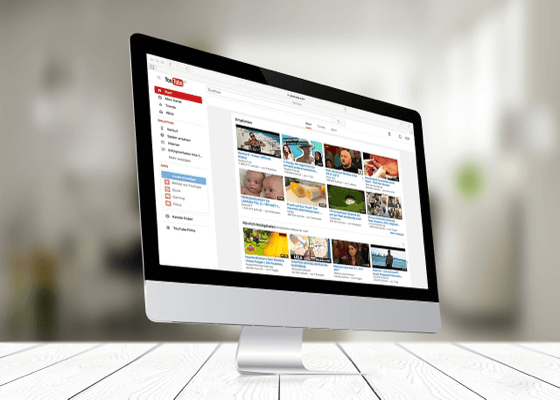Virtual Summit Case Study – Build Your List
17,836 New Subscribers, 12 New Partners, $9K in Profit
If you know how to do just two things online, you can be a true online marketing success.
Those things are: Building a profitable sales funnel and…
…list building.
Which is why I like to talk about both of these things so much.
Now to be fair, you don’t actually have to know how to do both.
That’s because if you’re terrific at list building, you can always promote other people’s products.
That way you don’t need to build your own funnels; you simply need to find great products and effectively sell your list members on buying them.
So let’s say you’re brand new to marketing, and you decide you want to build a list. Terrific! How do you go about it?
The traditional method is to create great content and promote it like crazy, and then rinse and repeat.
And repeat.
And repeat.
And repeat.
And in a few short months, if you’re doing really well, you’ll have a decent sized list.
But for most marketers, a few short months turns into several long years, or more likely, they simply give up before their list ever turns into anything significant.
So how do you list build in an effective manner without endlessly creating and promoting great content?
And can you do it in such a way that your subscribers are already warmed up to you?
By thinking big and using the method one new marketer tried recently.
I briefly mentioned this method in a previous newsletter. One of our subscribers decided to give it a shot, and here’s what he did, HOW he did, and what he learned.
Things to know about hosting a Virtual Summit:
1: It generally takes about 1-3 months to set up this strategy, and then 10 – 15 days to execute. Your times may vary.
2: This strategy is hugely effective and totally repeatable, meaning you can do it over and over again, generating a very large list every time. You can repeat it in the same niche, or even do it in multiple niches.
3: Anyone can do this, regardless of whether you’re experienced or not. If you’re brand new to online marketing, allow yourself extra time to learn and sort things out as you go.
So what is a virtual summit?
It’s sort of like an information party on a particular topic, in which every expert attending the party invites their list to join.
Here’s how it works:
1: You pick a topic within your niche for the summit
2: You invite experts to speak at your summit
3: You interview each expert ahead of time
4: You ask each of your experts / speakers to promote the event, capturing the email addresses from every prospect.
5: You get affiliates to promote it as well.
6: Between your experts sending traffic, and your affiliates sending even more traffic, you quickly build a very large list.
7: You release the interviews with each speaker over the duration of your event — anything from about 3 days to 2 weeks.
8: You split revenue with your speakers — generally 50 /50, but this is flexible.
About the case study:
I’m changing his name and calling him Joe. I’m also not going to mention his niche, other than to say it is NOT internet marketing.
But it is a niche that almost anyone could enter, and Joe isn’t looking for more competition. I can’t blame him, and I think it’s awfully nice of Joe to share his experience with us.
“Joe, can you tell us what you did, and the order you did it in to make this virtual summit work?”
Well, first I chose a topic. That took me about a week, because I wanted to get it just right — something people in my niche really wanted to know about from people with expertise.
I knew I needed a product to sell, so I made it easy and chose to sell recordings and transcripts of all the calls. Plus I wanted to plug one product for each of my speakers.
I shared in the profits for each speaker product, and I shared the profits from the recordings with my speakers and affiliates. When someone they referred bought the recordings, they got a 90% commission.
I did this because I was making profit from the speaker’s products, plus my biggest goal was to build my list. I figured the more I paid, the more affiliates I might attract, the bigger the list I would build, and the more money I could make from that list later.
I sacrificed a lot of my immediate profits for bigger profits down the road.
Then I made a calendar, with the dates for the event and everything I had to do prior to the event itself.
I made a list of potential speakers and used a scheduling system for the interviews, so they could choose their own time. I used setmore.com just because I’m familiar with it, and it’s free, but there are a lot of great services you can use.
Then I made a page for affiliates and another page for my experts. Someone told me to line up my affiliates first and then get the experts, but that didn’t make sense to me. I wanted to be able to tell affiliates who my experts were, so I didn’t promote the affiliate program — other than to a few fellow online marketer friends — until I had my list of speakers.
I contacted potential speakers, and I was nervous. But hey, what was the worst that could happen?
I wrote a short email encouraging them to visit my page for speakers. I sent that out to about 50 experts, and didn’t hear much back at first.
So I followed up two days later, and two days after that, being very polite about it but persistent.
Joe, what surprised you the most about the whole process?
Once I got the first couple of experts, the rest came on board almost immediately. It was kind of like magic. I’d say, ‘I got this expert, he runs the so-in-so site and has X number of subscribers. Have you heard of him? And I got this other expert, she’s the head of such-in-such company, and she’s really excited about this because of the new business it will bring her.’
So I’d tell them about those first two people, and that same day I signed up five more, four of which had been hemming and hawing and not sure they wanted to do it.
The following day, I reconnected with everyone else I’d already asked to join me, along with a few new ones, and that day I finished filling my roster.
Really, getting those first two had a domino effect. Until I got those, I had been banging my head for almost a week trying to get the first one to say yes.
So how did you get those first two?
I was a long-time subscriber to the first guy’s site, and I read all his emails and sometimes commented on his blogposts.
Really, I didn’t think I could ever get him to say yes, so I didn’t even approach him at first.
I was waiting until I had others on board, and then I was going to ask him. But no one was saying yes, so I thought, ‘Why not?’
I emailed him, told him how long I’d been a subscriber and how much I enjoyed his posts. Much to my shock, he emailed back the same day and asked me to jump on Skype.
We talked for a few minutes — I was really nervous at first, but he was nice — and before we ended the call he said yes.
Getting off that call, I immediately contacted the second person and told her the first one said yes, and when she heard that she jumped in, too. Man, was I ever excited at that point!
If you’ve been a subscriber or customer of the people you’re approaching, let them know up front. And tell them why you like their stuff, too. A little honest flattery goes a long way.
How did you work the interviews?
I sent each speaker a list of questions tailored to the exact topic they would be speaking about, and asked them to add any questions they wanted me to ask.
I wasn’t trying to surprise anyone, and I wanted them to think about their answers prior to the interview.
Then at each appointed time, I called them on Skype and recorded the interview. I was super nervous the first time, but by the third one I really felt like I was getting the hang of it. By the fourth or fifth one, I was having a blast, and I think you can tell that on the recordings.
Then I took each interview and had a friend who’s good with audio fix it up. He took out any long pauses and things we messed up. Basically, he just cleaned each one up for me, and it made a big difference.
Then I had them transcribed. What I really liked was I got to do all of this ahead of time. If I had to do the interviews live, I’m not sure I could have gotten through it.
Okay Joe, you have your interviews… what did you do next?
I recruited affiliates, encouraged my experts to spread the word to their lists, did social media leading up to the event… and all the while I see my list growing and growing.
People would come to the landing page and sign up for the event. Then we followed that with an offer to get the recordings for half price, and I was surprised that about 4-5% did exactly that.
Another 2-3% bought the recordings during the event, and then at the end we let it be known that time was running out, and we sold even more. In fact, about 18% of our total sales came in the last 12 hours.
Of course, nearly all of this money – 90% – was going to my affiliates and experts who brought the traffic, but I was so excited to get this huge list.
And of course I am on every single recording, which I think is a great way for my new list to get to know me.
How did you release the recordings?
I had 12 experts, and released one recording per day for 12 days. I made each recording available for 48 hours, and then took it down.
I sent an email each morning when a new recording was added, and a second email in the afternoon letting them know there was only about 12 hours left to listen to the one that was coming down. This way I got to email my list twice a day for the 12 days, always reminding them that they could buy a full set of the recordings, too.
Really there was a lot more to do, lots of little things, but as you go through the process you realize what needs to be done and you just do it.
I’m going to make this an annual event. And since I also work in one other niche, I’m going to try it there as well.
How did you present each offer that the experts made on their calls?
First I made sure that the experts gave plenty of good, useable info for the listeners. And then I basically let the experts pitch their own product.
I did chime in with an endorsement and testimonial for each, because I made sure to go through their products ahead of time and really check them out. I didn’t want any offers made to my new subscribers that weren’t truly helpful.
And you made a percentage of those sales of the experts’ products?
Yes, the percentage wasn’t the same for each one. It was really whatever I negotiated, and frankly I just pretty much let the experts tell me what I would be earning.
Looking back that was probably a mistake. It was my event and I was putting all this work into it, so maybe I should have been bolder in insisting on what my commission would be.
But I have to say, 9 out of 12 of the experts were truly reasonable in this.
The other three, well, one I did negotiate, but not enough, and the other two I kinda let run me over, and looking back it was a mistake.
I should have made a higher percentage on those three, because I earned it.
What tips do you have for our readers when they hold their own virtual summits?
Have fun. I was so stressed at first, wondering if I could do this. It’s not rocket science, and you’re giving your experts a platform, something they love. It’s truly a win-win-win-win for everyone involved.
By the way, that’s 4 wins: For you, your experts, your affiliates and your summit attendees.
One mistake I think I made was doing this only in audio. I should have done video, and I will next time.
Also, get someone who is good with audio to clean up your mistakes. I even had him insert a blurb every 12 minutes or so in the recordings that reminded listeners of what they were listening to — my name and the name of the summit. That was a great way to fix my name in the minds of my new subscribers, and I think it helped with my email open rate after that.
Also, focus more on building your list than on making a killing with your summit. The real money comes later, because now you’ve got all this trust with your list, and they’ll buy pretty much whatever you recommend.
Which reminds me, treat your subscribers with utmost respect. This was a lot of work, putting on this summit and building this big list, and I don’t want to do anything to jeopardize my relationship with my subscribers.
So, I treat them like honored friends in all of my emails, and only recommend products I truly love and use.
Are you going to keep in touch with your experts?
Oh yes, absolutely. This is a great way to build relationships with the well-known people in your niche.
I’ve already partnered with three of them on different projects, and we’ve got more in the works.
Plus when I need help with something – guidance or whatever – I can email or Skype them now and they respond.
It’s amazing being friends with people I used to think were above me or just too big or too internet ‘famous’ to talk to.
They’re very real and nice and I’m thrilled to now call some of them my friends.
Joe, any last advice for someone about to hold their first summit?
Yeah, act like you’ve got lots of confidence, but don’t act like you know what you’re doing every minute.
I don’t know if that makes sense, but here’s what I found: By acting confident, the experts and affiliates were comfortable working with me.
But by not acting like I knew what I was doing every step of the way, and admitting this was a new experience for me, those same experts and affiliates were understanding and helpful when things didn’t always go exactly right.
It’s sort of a fine line, but it really worked for me.
And the last thing is, don’t beat yourself up. You’re going to say something stupid during an interview, or make a mistake or two or twenty along the way.
Just sincerely apologize and let it go. It’s a learning process, and it’s worth the time and effort to do this.
Sure, it was scary, but it was also exhilarating, and I can’t wait to do it again!























